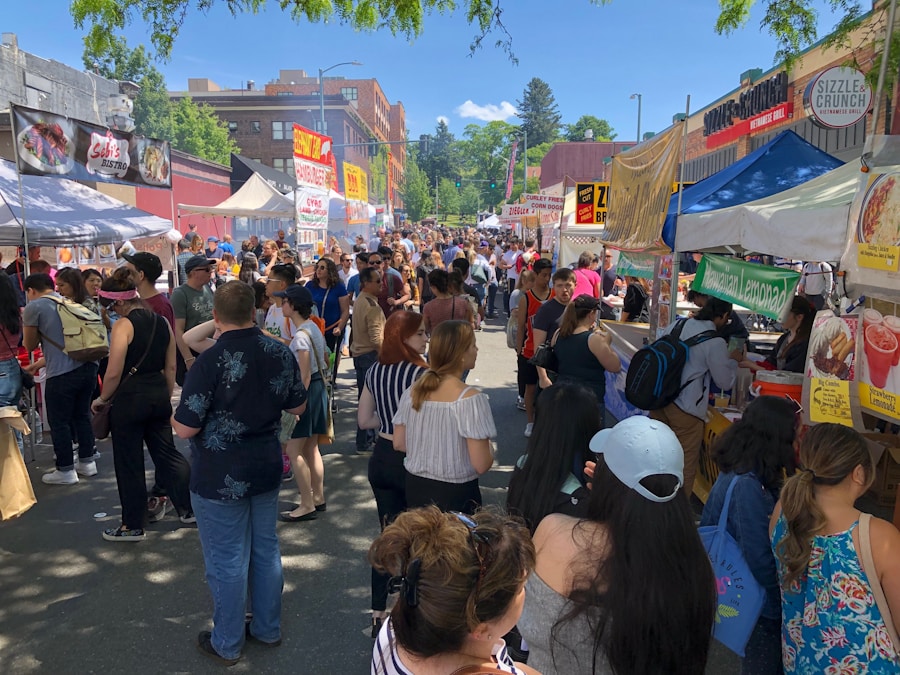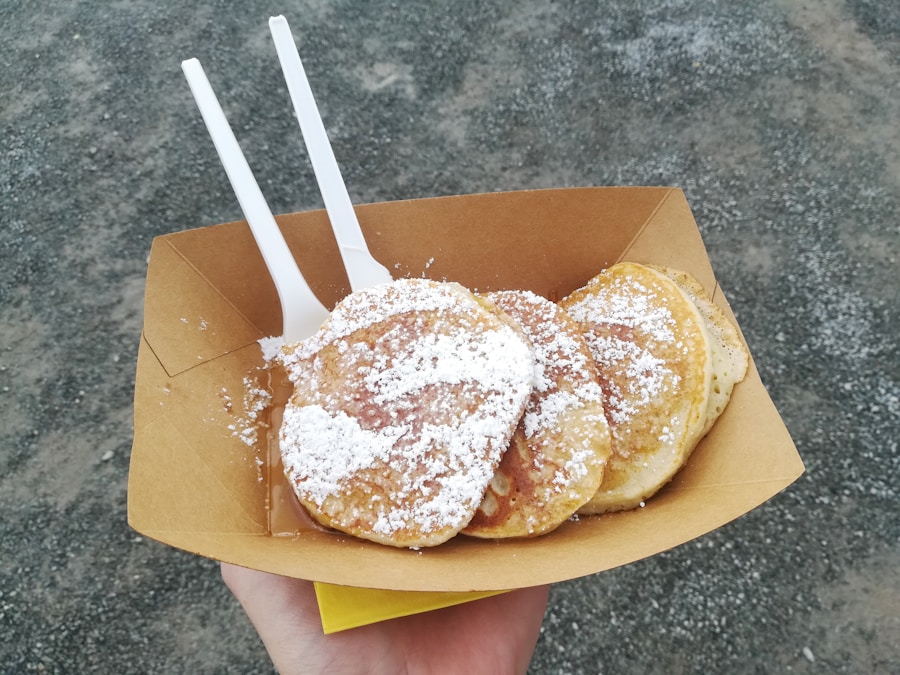Pierogi, the beloved dumplings that have become synonymous with Polish cuisine, boast a rich and complex history that traces back several centuries. The origins of pierogi can be linked to the culinary traditions of Eastern Europe, particularly Poland, where they are thought to have been introduced by the early Slavic tribes. Historical records suggest that the first pierogi were made in the 13th century, although some culinary historians argue that their roots may extend even further back, possibly influenced by the dumplings of neighboring cultures such as the Chinese jiaozi or the Italian ravioli.
The name “pierogi” itself is derived from the Polish word “pieróg,” which means “filled dumpling,” and reflects the dish’s fundamental characteristic of encasing a variety of fillings within a thin layer of dough. As pierogi spread throughout Poland and beyond, they evolved to incorporate local ingredients and flavors. In rural communities, pierogi became a staple food, often prepared for special occasions and family gatherings.
The versatility of pierogi allowed them to adapt to seasonal ingredients, leading to a wide array of fillings that could include potatoes, cheese, sauerkraut, mushrooms, and even fruits like blueberries or strawberries. This adaptability not only made pierogi a beloved dish among Polish families but also solidified their place in the cultural fabric of Poland. Over time, pierogi became associated with various religious and cultural celebrations, such as Christmas Eve dinner, where they are traditionally served as part of the twelve dishes that symbolize abundance and prosperity.
Key Takeaways
- Pierogi originated in Eastern Europe, with the earliest mentions dating back to the 13th century.
- The Pierogi Festival is a lively celebration of Polish cuisine, featuring music, dance, and of course, plenty of pierogi.
- Making pierogi involves a delicate balance of preparing the dough and crafting the perfect filling, often with ingredients like potatoes, cheese, or sauerkraut.
- Pierogi come in a variety of flavors, from savory options like meat and mushrooms to sweet fillings like berries and cheese.
- The festival offers a range of activities, from cooking demonstrations to pierogi eating contests, showcasing the versatility and popularity of the dish.
Pierogi Festival: A Cultural Celebration of Polish Cuisine
Savoring the Flavors of Pierogi
The festival features an array of vendors offering different types of pierogi, from traditional potato and cheese to more innovative fillings like buffalo chicken or spinach and feta. This culinary diversity reflects the evolution of pierogi over time and highlights how they have been embraced by different communities.
A Vibrant Cultural Celebration
Beyond the food, the Pierogi Festival serves as a vibrant cultural celebration that includes live music, dance performances, and art displays that showcase Polish traditions. Attendees can enjoy folk music performances that evoke the spirit of Poland, while traditional dances such as the Polonaise or Mazurka bring the community together in celebration.
Learning and Community Building
Additionally, workshops and cooking demonstrations provide an opportunity for festival-goers to learn about the history and techniques behind making pierogi, fostering a deeper appreciation for this iconic dish. The festival not only serves as a platform for culinary exploration but also strengthens community ties by bringing people together to celebrate their shared heritage.
The Art of Making Pierogi: From Dough to Delicious Filling

Creating pierogi is an art form that requires skill, patience, and a deep understanding of the ingredients involved. The process begins with making the dough, which is typically composed of flour, water, eggs, and a pinch of salt. The key to achieving the perfect dough lies in its consistency; it should be pliable yet firm enough to hold the filling without tearing.
Once the dough is prepared, it is rolled out into thin sheets before being cut into circles or squares, depending on personal preference. The filling is where creativity truly shines in pierogi-making. Traditional fillings often include mashed potatoes mixed with cheese, sautéed onions, or sauerkraut seasoned with spices.
However, modern interpretations have expanded this repertoire significantly. For instance, some cooks experiment with sweet fillings like farmer’s cheese mixed with sugar and vanilla or even chocolate-infused options for dessert pierogi. The filling is placed in the center of each dough circle before being carefully folded over and sealed to create a half-moon shape.
This sealing process is crucial; it ensures that the filling remains intact during cooking and adds to the overall aesthetic appeal of the finished dumpling.
Pierogi Varieties: Exploring the Different Fillings and Flavors
| Pierogi Variety | Fillings | Flavors |
|---|---|---|
| Ruskie | Potato, cheese, onion | Savory |
| Kapusta | Sauerkraut, mushroom | Savory |
| Meat | Ground meat, onion | Savory |
| Blueberry | Blueberry | Sweet |
| Strawberry | Strawberry | Sweet |
The beauty of pierogi lies in their incredible versatility, which allows for an endless array of fillings and flavors that cater to diverse palates. Traditional Polish pierogi often feature fillings such as ruskie (a combination of potatoes and cheese), kapusta (sauerkraut), or meat-based options like ground pork or beef. Each region in Poland has its own specialties; for example, in Silesia, you might find pierogi filled with mushrooms and served with a rich gravy, while in Lublin, sweet fruit-filled pierogi are popular during summer months.
In recent years, culinary innovation has led to a surge in creative pierogi fillings that reflect contemporary tastes and dietary preferences. Vegetarian and vegan options have gained popularity, with fillings made from roasted vegetables or lentils providing hearty alternatives to traditional meat-based recipes. Additionally, fusion cuisine has introduced exciting combinations such as buffalo chicken pierogi or Thai-inspired dumplings filled with curried vegetables.
This evolution not only keeps the dish relevant but also invites new generations to explore and enjoy pierogi in ways that resonate with their own culinary experiences.
Pierogi Festival Activities: From Cooking Demonstrations to Pierogi Eating Contests
At any Pierogi Festival, attendees can expect a lively atmosphere filled with activities that celebrate both the culinary art of making pierogi and the joy of eating them. Cooking demonstrations are a highlight of these festivals, where skilled chefs share their techniques for crafting perfect dumplings from scratch. Participants can learn about different types of dough, how to create various fillings, and tips for cooking and serving pierogi in traditional ways.
These demonstrations often include tastings, allowing attendees to sample freshly made pierogi while gaining insight into their preparation. In addition to cooking demonstrations, many festivals host fun competitions such as pierogi eating contests that draw enthusiastic participants eager to showcase their appetite for this beloved dish. These contests often attract large crowds who cheer on contestants as they race against the clock to consume as many pierogi as possible within a set time limit.
Such events not only add an element of excitement but also foster a sense of community among festival-goers who come together to celebrate their love for pierogi in a lighthearted manner.
The Impact of Pierogi on Polish Cuisine and Culture

The Unifying Power of Pierogi
In Poland, pierogi are often present at family gatherings and festive occasions, highlighting their ability to bring people together around shared meals. It is common for families to gather in kitchens during holidays or special events to prepare large batches of pierogi together, fostering intergenerational bonds and preserving culinary traditions.
A Global Emblem of Polish Culture
Pierogi have transcended their humble origins to become an emblematic dish representing Polish culture on a global scale. As Polish immigrants settled in various countries throughout history, they brought their culinary traditions with them, introducing pierogi to new audiences. Today, they are celebrated not only in Poland but also in countries with significant Polish populations such as the United States, Canada, and the United Kingdom.
A New Era for Polish Cuisine
This global appreciation has led to an increased interest in Polish cuisine overall, encouraging chefs and home cooks alike to explore traditional recipes while also experimenting with modern interpretations.
Pierogi Festival Around the World: How the Dumpling is Celebrated in Different Countries
The love for pierogi extends far beyond Poland’s borders; various countries around the world celebrate this delightful dumpling through festivals that highlight its cultural significance. In the United States, cities with large Polish communities often host annual Pierogi Festivals that attract thousands of visitors eager to indulge in this beloved dish. For instance, Chicago’s Pierogi Fest features not only an impressive array of food vendors but also live music performances and cultural exhibits that showcase Polish heritage.
In Canada, particularly in regions like Ontario where there is a strong Polish presence, similar festivals take place celebrating both traditional and contemporary takes on pierogi. These events often include cooking competitions where local chefs vie for recognition by creating unique variations on classic recipes. Additionally, countries like Ukraine and Lithuania have their own versions of filled dumplings—variously known as varenyky or kolduny—which further illustrates how this culinary concept has permeated different cultures while retaining its core essence.
The Future of Pierogi: How the Traditional Dish is Evolving in Modern Cuisine
As culinary trends continue to evolve in response to changing tastes and dietary preferences, so too does the humble pierogi adapt to meet contemporary demands. Chefs around the world are reimagining this traditional dish by incorporating global flavors and innovative techniques into their recipes. For example, some restaurants now offer gluten-free or whole grain dough options to cater to health-conscious diners while still preserving the integrity of the dish.
Moreover, there is a growing trend towards sustainability within food culture that has influenced how pierogi are made and served. Many chefs are prioritizing locally sourced ingredients for their fillings—such as seasonal vegetables or artisanal cheeses—thereby supporting local farmers while enhancing flavor profiles. This shift not only elevates the quality of pierogi but also aligns with broader movements towards sustainable eating practices.
In conclusion, while pierogi remain deeply rooted in tradition, they are also evolving alongside modern culinary trends that celebrate creativity and inclusivity within food culture. As new generations discover this iconic dish through festivals and innovative recipes alike, it is clear that pierogi will continue to hold a cherished place within both Polish cuisine and global gastronomy for years to come.



